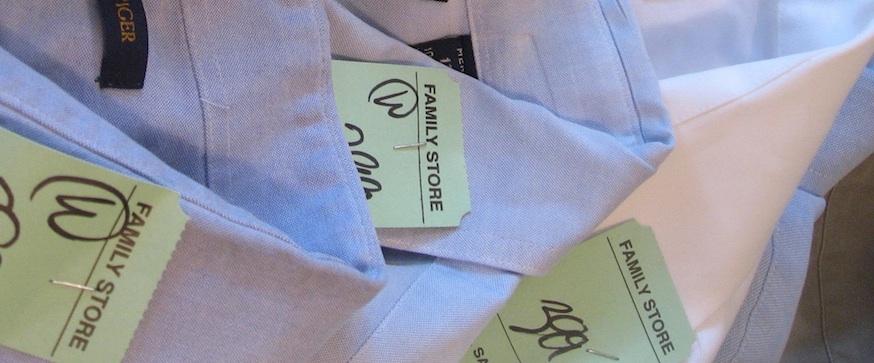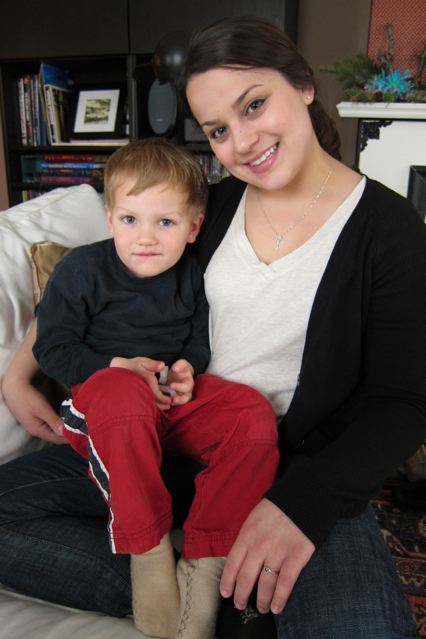I am thrilled to announce that I will be writing about saving money, making money, and the pursuit of happiness at Babble’s New Home Ec blog.
The New Home Ec is billed as “Babble’s newest home style and family living blog for the family with a time-crunch and an eye for design, DIY, and doing things their way — all while staying within budget.”
I am part of a team of eight crafty, handy, and inventive women. And I have to admit, being asked to come on board at Babble was like being the girl at the dance who looks behind her when she gets approached by the homecoming king and says, “Who me?”
I hope you’ll hop on over and check out The New Home Ec. We will be covering:
- Crafts and do-it-yourself tutorials like how to make a play tent for your child
- Home Improvement, such as making the most of a small kitchen or how to reupholster a thrift store couch
- Cleaning & Organizing, like how to declutter, throw a yard sale, or bop while scrubbing your bathroom
- Gardening: how to plant a container garden and get your kids digging
- Green Living, such as all-natural solutions for common household problems and rock crafts for kids
- Economic Living (that’s me!): you know I’ll be all over tips and ideas on how to achieve your ideal lifestyle — for less
How This Happened and What it Has to Do with You
Remember when I wrote in Don’t Read This if You Want Your Life to Stay the Same about achieving our goals?
I said that my writing career had taken off after I:
- decided what I wanted
- wrote it down, and
- told the world.
Around the same time, a writer friend of mine was asked by Babble if she could recommend a blogger. This friend saw my post about what I had achieved so far, and recommended me for the job!
The reason I’m bringing up the idea of setting and announcing goals is because:
- I’m amazed that it’s working so well.
- I’m seeing this advice everywhere.
- I know it can help you too.
Stories About Reaching Your Dreams? I Want to Hear Them!
This week Stephanie wrote me to say that, as a result of setting goals and sending them out to the universe, she is making more money from her Etsy business than she could have ever imagined. You’ll hear her story of how she did it soon, but in the meantime, I want to hear from more of you about finding your passion, starting a home business, or realizing a dream.
Because as much as I want to be successful, I want you to be successful. It’s inspiring to hear all the cool things people are doing, and the more we can cheer each other on, the better for all of us.
How I Need Your Help
Kind of like my writing at TLC, my new job at Babble is dependent on pretty ambitious traffic goals. So . . . if you like something you read, and you think other people would too, please consider using your favorite tools to spread it around. It would help me out greatly.
And by the way, I know a bunch of you are already doing this and, let me tell you, knowing I have supporters is like being given a lifejacket as I’m jumping off a cruise ship. It’s scary out there, and your emails, likes, tweets, comments, and shares feel like a big hug. Thank you.
. . . and Why
I make zero money from Frugal Mama. Yes, it’s a passion and I hope to someday indirectly benefit from its success (in terms of a book deal or something). But for now, I do it for free.
I turn down offers for advertisements, sponsored posts, and paid give-aways. Affiliate marketing (getting a commission for helping someone sell something) is out too, because I think it can get tricky to be objective when you’re getting paid.
The reason is that I want to provide you with super unbiased, high-quality advice that you can trust. Considering my niche — saving money and spending less — I just don’t feel comfortable trying to sell something. Eventually I may seek out sponsors in companies that I believe in, but for now, I’m sticking to ad-free.
Instead, I occasionally point you toward my other writing for which I do get paid (because driving readers to those articles is part of my job). I only do this if the articles are related to saving or making money.
My First Baby Steps
So if you like Frugal Mama, I hope you’ll like what I write at Babble. Here are my first two posts at the New Home Ec. Feel free to Like, Share, Tweet, +1, E-mail, or comment. Believe me, I will appreciate everything.
Tons of People Make This Mistake About Money: Don’t Be One of Them
and Finally, Thank You
Thank you for reading Frugal Mama and for being there for me. Please continue to tell me how I can help you.
–Amy
p.s. These pictures are from the past two weeks during a reunion with my cousins, which took place on our family farm in southern Ohio (where I’m from).









































